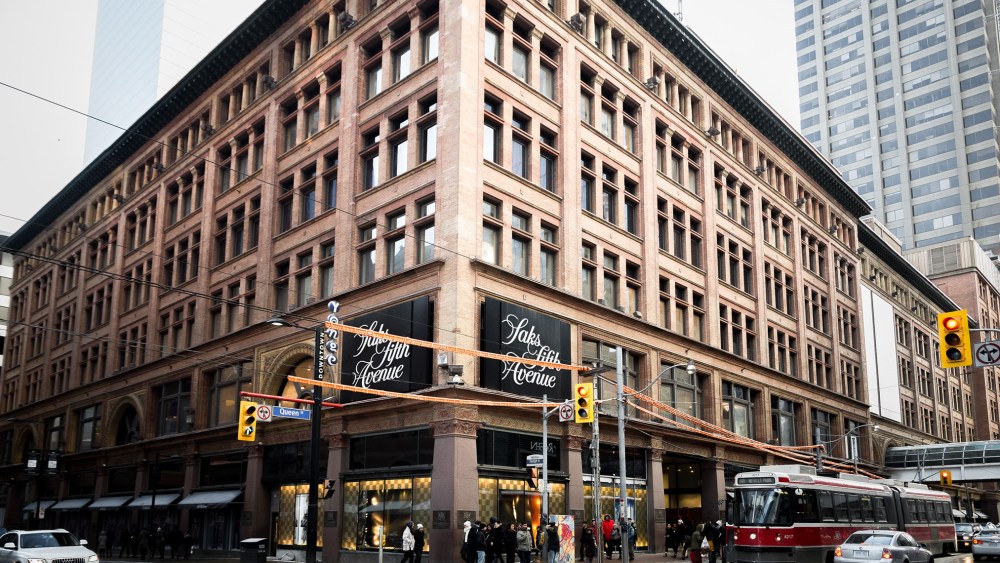
Department stores are swimming in a whirlpool of change, and it’s no longer just the mid-tier that’s confronting challenges.
All eyes are on Saks Fifth Avenue and the Neiman Marcus Group, which are close to merging while managing through the global luxury downturn as consumers spend more on traveling, entertainment and other experiences and less on material goods.
The Saks Fifth Avenue store fleet, wholly owned by HBC, has not been paying its bills. That’s one way to manage. Saks.com, a separate company owned by HBC and the private equity firm Insight Partners, is believed to be more current on bills.
As it nears completing its deal to buy the Neiman Marcus Group, vendors are concerned about the potential impact. HBC is taking a close look at its own store portfolio, including locations where Saks and Neiman’s both have stores, such as in Beverly Hills and Bal Harbour, Fla., and in Canada where business is tougher than in the U.S.
You May Also Like
The seasonal Saks store in Palm Beach, Fla., is expected to close next year. HBC executives have said the merger will benefit vendors by providing new financing and equity infusions and future property sales to improve liquidity, helping them to catch up on outstanding payments. However, once HBC takes over Neiman Marcus, the new and bigger retail entity created would be able to exert greater buying power over the vendors, and could lead to some closures.
In the mid-tier, Macy’s and Kohl’s continue to report declines, and Dillard’s, an outlier in the sector, showed a rare and surprising dip in third-quarter profits and sales. Business at Belk, owned by the Sycamore Partners private equity firm, is said to be experiencing softness as well.
Nordstrom, however, seems to be climbing out of its rut, increasing the chances that the Nordstrom family succeeds in taking their business private next year. Nordstrom Inc.’s financial results are improving. Executives have done a good job managing expectations.
For the third quarter, the Seattle-based retailer cited recent traction from fresher brand merchandise and investments in expanding the Rack off-price division and managed to surpass Wall Street expectations on the top and bottom lines. While underscoring the strength of the business in the third quarter, chief executive officer Erik Nordstrom cited a slowdown in the first couple of weeks of the fourth quarter, while Cathy Smith, chief financial officer, said the external environment is “uncertain” and that the company is “prudently cautious” on its outlook for the current quarter.
After barely making it through the first two decades of the 21st century, Penney’s is on a much different path since being lifted from bankruptcy in November 2020 by current owners Simon Property Group Inc. and Brookfield Property Partners LP. Seeking to strengthen its appeal to America’s cash-strapped working-class families, Penney’s has been aggressively calling out deals on the selling floors, most noticeably through its “Gotta Have It” pricing, which flags scores of items at everyday low prices and diverges from the standard of high-low pricing and couponing.
“We have not raised prices. We are keeping them consistent,” Penney’s chief executive officer Marc Rosen recently told WWD. That’s good news to consumers impacted by inflation.
“Value more than ever is key for our customers. Costs on everyday goods are still high,” he said. Penney’s $1 billion “refresh” program to upgrade its stores and jcp.com has been funded by Penney’s and not by its owners, Rosen said. While some retail experts question whether the retailer still has a reason for being in an age where Walmart, T.J. Maxx and Amazon continue to make inroads, Rosen has said Penney’s is back on a growth track.
At Kohl’s last month, when CEO Tom Kingsbury stepped down and was succeeded by Ashley Buchanan of Michaels Cos., it was a clear sign that the department store needed a new perspective on how to turn itself around.
Kingsbury said he was “proud of what the team has accomplished with our focus on enhancing the customer experience, driving value for customers and running a sound and profitable business.” But he’s leaving before his contract is set to expire next May, and on a conference call with retail analysts, he acknowledged the third quarter was “frankly disappointing” as growth areas — including Sephora, home decor and Babies “R” Us shops — did not offset declines in apparel and footwear. Kohl’s does have some things going for it, including its value proposition and innovative shopping incentives, such as the Kohl’s Cash program.
Meanwhile, Macy’s, which has a strong executive team at its helm, has had plenty to deal with, from fending off activist pressures to reversing recent sales declines, and a serious accounting issue related to an employee who intentionally hid $151 million in delivery expenses.
The accounting issue was quickly resolved by an independent investigation that found no material impact to Macy’s. But the company’s other fixes are going to take more time.
Macy’s is biting the bullet and closing 150 underperforming department stores over a three-period, while investing in remaining locations that have a positive future. Under the plan, the company is shuttering about 150 underproductive locations through 2026; prioritizing investment in about 350 “go-forward” locations, and expanding its small-format store chains, which includes Bloomie’s, and downsized Macy’s units.
Chairman and CEO Tony Spring, during his third-quarter conference call with retail analysts, said he sees “positive momentum building through our Bold New Chapter strategy. We are encouraged by the consistent sales growth in our Macy’s First 50 locations and the strong performance of Bloomingdale’s and Bluemercury. Quarter-to-date, comparable sales continue to trend ahead of third-quarter levels across the portfolio.”




